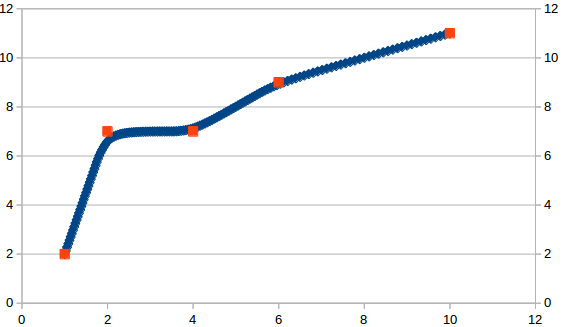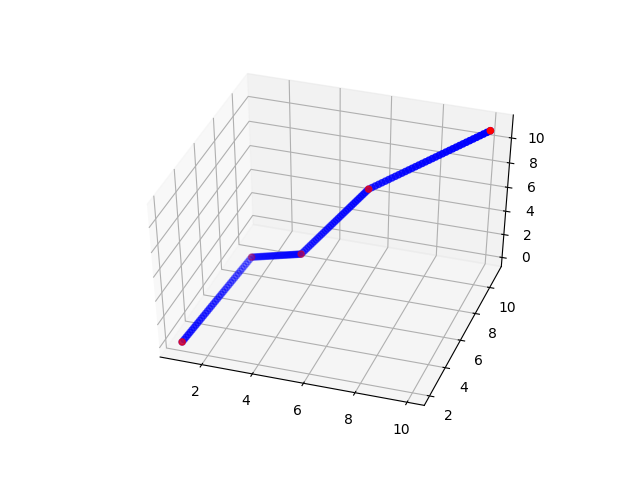State-Space Trajectory Planner
Given N dimensional sequential waypoints, this code will develop a n dimensional path that yields a smooth transition between states in real time.
The final path will be given in time intervals of the frequency of the motor controller, allowing for seemless integration into any control system.
PIDs are most commonly used to go from point n-1 -> point n -> point n+1. To have the most success, one should compute a motion profile that will follow the smooth path.
Declare a 2d array of your original way points
int num_points = 5;
int dim_points = 2;
float** points = malloc(num_points * sizeof(float*));
for (int i = 0; i < num_points; i++) {
points[i] = malloc(dim_points * sizeof(float));
}
//populate points with values here....then the maximum time you want this path to be completed in, as well as your motor controller's frequency
float totalTime = 15;
float timeStep = .1;Call smoothPath, which returns a 2d array (float) of your path, that starts at [1][0]. )[0][0] stores the length of the pointer, which includes the first slot.
float** sPath = smoothPath(num_points, dim_points, points, totalTime, timeStep);to read the values
for(int i = 1; i < sPath[0][0]; i++) {
for(int j = 0; j < dim_points; j++) {
//do something with sPath[i][j]
}
}Declare a 2d array of your original way points
double[][] waypoints = new double[][]{
{1, 2},
{2, 7},
{4, 7},
{6, 9},
{10, 11}
};then the maximum time you want this path to be completed in, as well as your motor controller's frequency
double totalTime = 15;
double timeStep = .1;Construct a new PathPlanner class, set optimization parameters (optional), then call .calculate to generate the smoothPath.
final PathPlanner path = new PathPlanner(waypoints);
path.setPathAlpha(0.7);
path.setPathBeta(0.3);
path.setPathTolerance(0.0000001);
path.calculate(totalTime, timeStep);The smooth path will be stored in
path.smoothPathDeclare a 2d array of your original way points
points = [[1, 2], [2, 7], [4, 7], [6, 9], [10, 11]]then the maximum time you want this path to be completed in, as well as your motor controller's frequency
total_time = 15
time_step = .1Now call smooth_path
path = smooth_path(points, total_time, time_step)
